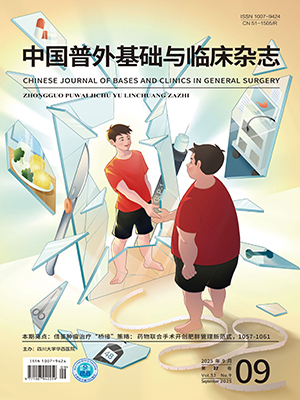Objective To evaluate the capability of 64 multidetector CT in the differentiation between mucinous and nonmucinous gastric cancer. Methods From June 2006 to June 2007, 68 patients diagnosed as gastric cancer (18 mucinous and 50 nonmucinous cancer) underwent preoperative scan with a 64-slice helical CT scanner at West China Hospital. The CT images were analyzed retrospectively on tumor location (proximal/distal stomach), diameter of tumor, appearance of thickened gastric wall, contrast enhancement pattern (layered/nonlayered), degree of enhancement and serosal invasion. Results The primarily thickened layer (94% of patients) was the low attenuation middle layer in mucinous cancer and the rate was 72% with high attenuating inner layer or entire layer in nonmucinous cancer. The most common contrast enhancement pattern and degree was layered (83% of patients) and non-enhanced (89% of patients) in mucinous cancer and nonlayered (76% of patients) with enhanced (60%of patients) in nonmucinous cancer. The more common serosal invasion was shown in mucinous cancer than in nonmucinous cancer (89% vs 64%). These findings were statistically significant (P<0.05). Tumor location and size of gastric cancer were not correlated with operative pathologic classification. Conclusion Sixty-four multidetector CT is effective in distinguishing mucinous from nonmucinous gastric cancer, predominantly on the basis of thickened and layered gastric wall, enhancement pattern of low-attenuating middle layer.
Citation: WU Bing,ZHANG Wenyan,HU Jiankun,ZHANG Bo,CHEN Xinzu,HUANG Zixing. Mucinous Versus Nonmucinous Gastric Cancer: Differentiation with 64 Multidetector CT. CHINESE JOURNAL OF BASES AND CLINICS IN GENERAL SURGERY, 2008, 15(5): 378-382. doi: Copy
Copyright © the editorial department of CHINESE JOURNAL OF BASES AND CLINICS IN GENERAL SURGERY of West China Medical Publisher. All rights reserved




